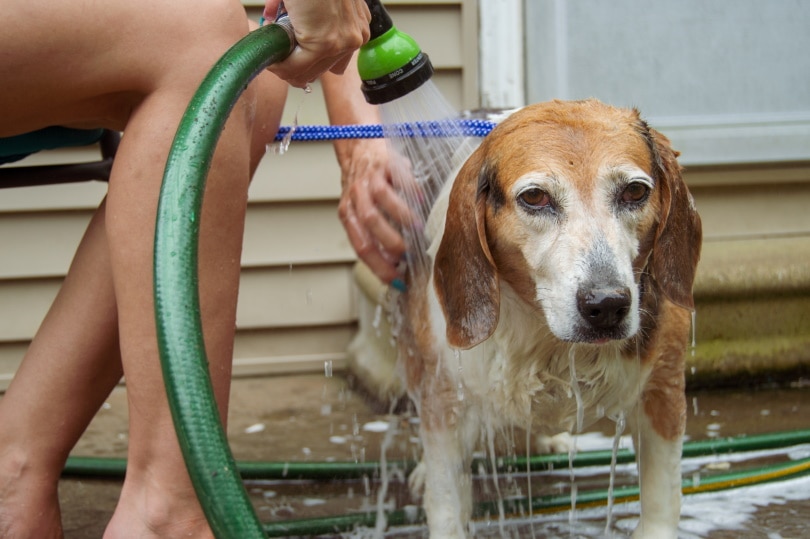Do Newfoundland Dogs Like to Swim? Breed Facts & FAQs
Updated on
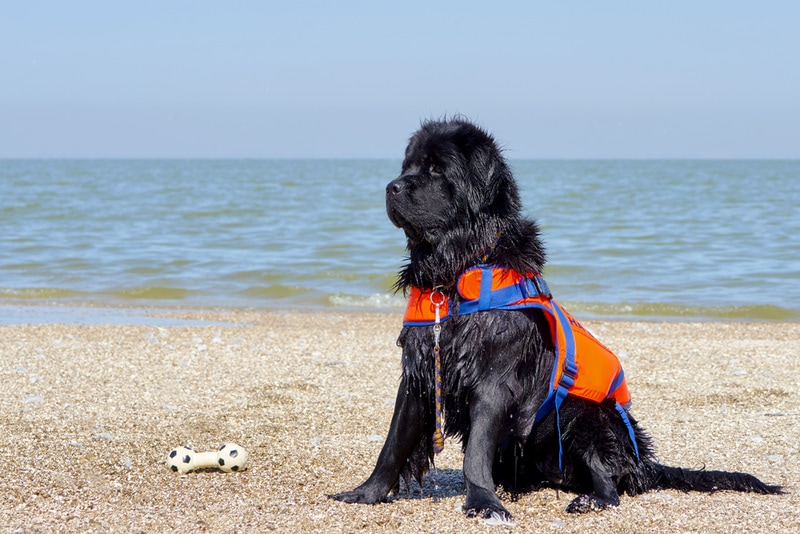
Newfoundland dogs are water dogs and have long been bred for water-related activities. But not all of them like to swim. If your dog hasn’t been introduced to water or swimming early in life, they may not be a huge fan of swimming as an adult.
But Newfies are generally good swimmers. Their capabilities make them ideal water rescue dogs. It’s essential to introduce your Newfoundland to water at a young age to train them properly.
Want to learn more about Newfoundland dogs and swimming? Keep reading.
What Makes Newfoundland Dogs Good Swimmers?
Newfoundland dogs have several behavioral and physical traits that make them good swimmers. Here are some obvious ones:
Double Coat
Newfies have a water-resistant double coat, keeping them warm in the water. The undercoat is soft and thick, while the outer coat is slightly wavy, oily, and long. A combination of two coats insulates the dog’s body in water. It also helps in repelling water, keeping the dog buoyant or afloat.
Webbed Feet
Newfies have large, webbed feet that resemble paddles. These feet allow the dogs to move through the water like a duck, propelling them forward with minimum effort. The breed also has strong tails and legs that give them the additional strength to swim long distances.
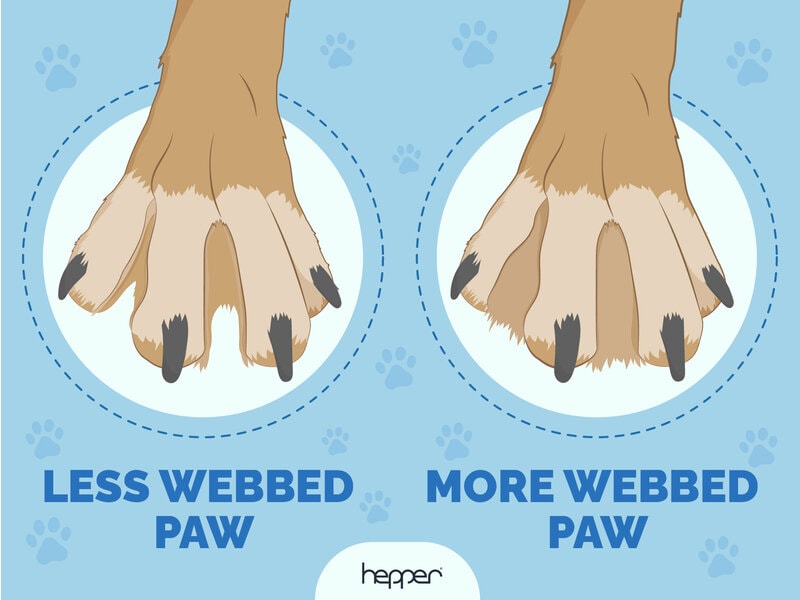
Natural Instinct
Newfoundland dogs also seem to have a natural instinct for water rescue. That’s why you’ll sometimes see them working as water rescues dogs or lifeguards near various bodies of water. They also have a gentle and calm demeanor, which makes them well-suited for emergencies.
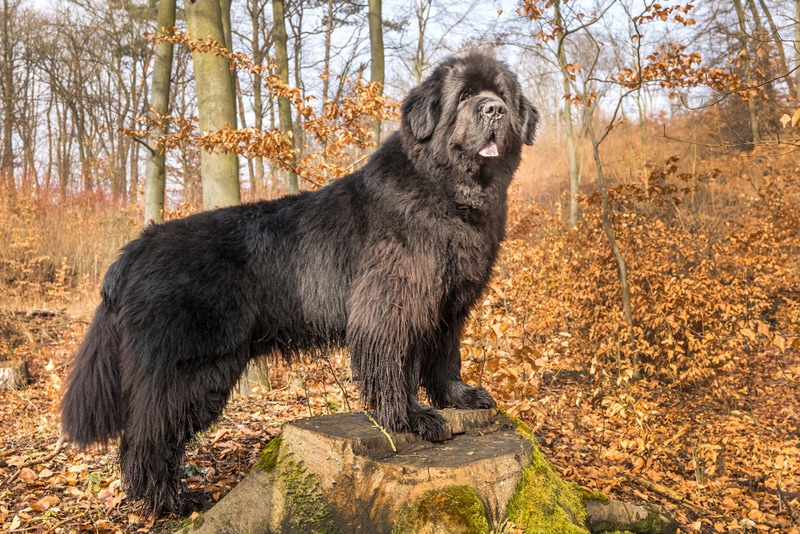
Do Newfoundlands Like Water?
Newfoundlands are fond of water and make excellent swimmers. The breed originated in Newfoundland, Canada, where the dogs were trained to retrieve fishing nets for the fisherman. So, they have developed a natural affinity and liking for water.
But, like any other dog breed, your dog might have individual preferences. Depending on prior training or its personality, your dog may not like water activities.
How Fast Can Newfoundlands Swim?
Like most other swimmer breeds, Newfoundlands can swim 1 to 3 miles per hour.1 Their swimming speed is the same as an average human.
Just because it may seem like they’re slow swimmers doesn’t mean they’re bad swimmers. Dogs lack the lung capacity and limb range of motion as humans, so their swimming speed is naturally slower.
What Are Pete Lewin’s Newfoundlands?
Pete Lewin is the director of Pete Lewin’s Newfoundlands and a paramedic by profession. He works with Newfoundlands, training them as emotional support dogs who take people to swim with them.
According to him, the breed’s double coat is why Newfies swim like polar bears rather than other dogs. He further says Newfies have a big tail that acts like a rudder when they swim.
While other breeds doggy paddle, Newfies do something like a breaststroke. Looking at it from the top, you’d notice the dog moving like a swan—elegant and swift. But underneath the water, its legs are doing engine-like work. Lewin says that a single Newfie can pull 12 people in the water.
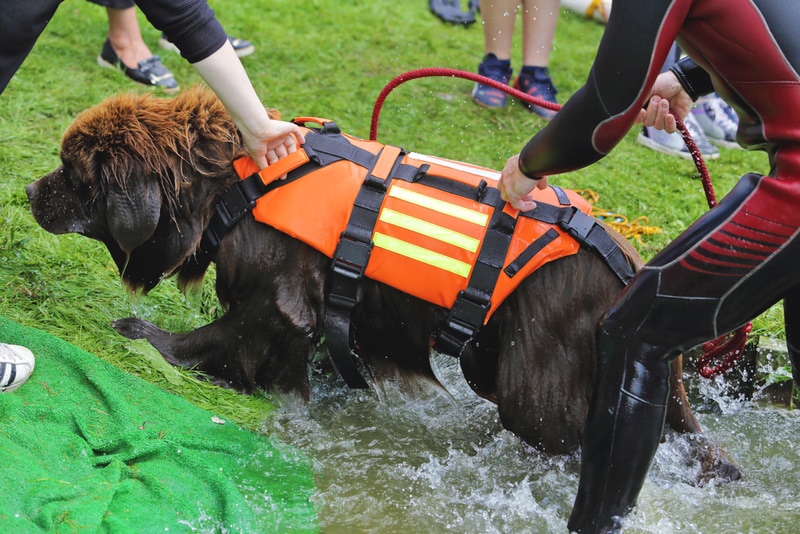
What Do Pete Lewin’s Newfoundlands Do?
Lewin’s Newfoundlands are trained to be rescue and emotional support dogs. In a podcast with Dr. Paula Redmond, Lewin talked about his dogs being able to perform several maneuvers, including a C spine mobilization. When a jet skier at 60 to 70 miles per hour falls off the jet ski, they could have a C spine injury. The trained Newfoundlands can create a human cradle around the injured individual to support them.
It takes three dogs to perform this maneuver. One Newfie supports the patient’s head and neck, keeping them aligned. The rescue dog’s legs form a cradle around the patient’s hips, while its arms rest on the patient’s shoulders to support them.
Meanwhile, the other Newfie acts as a leg-end rescuer. It holds the patient’s legs firmly so that they don’t drift away.
Finally, a third rescue dog comes in and pulls all three parties—two rescue dogs and one patient—to the shore. The dogs’ physical characteristics and training allow them to perform this maneuver to save people’s lives.
When to Introduce Your Newfoundland to Swimming
You can start introducing your Newfie dog to swimming at 7 weeks of age. However, it’s important to consult the vet beforehand.
While swimming in your backyard pool might be safe for your pup, the same may not be true for your local pond. Take your dog to the vet and get the required vaccinations before you take them to a local pond or lake.
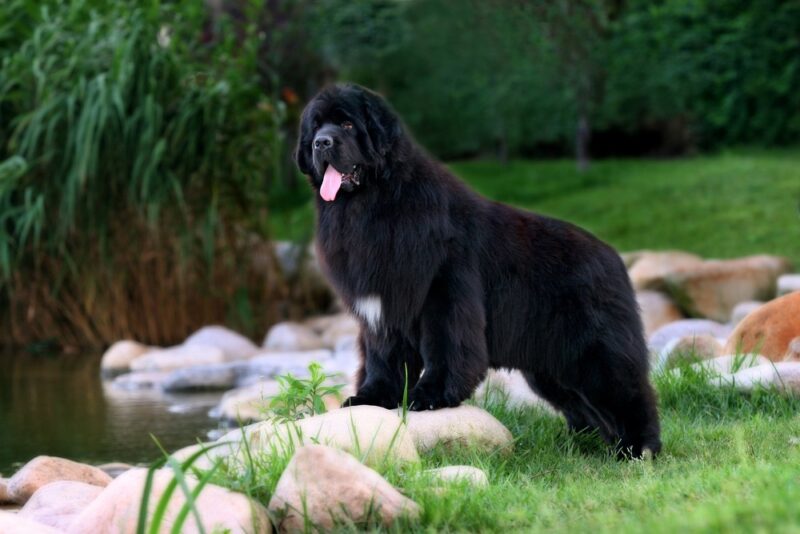
How to Train a Newfoundland to Swim
Is your Newfie old enough to enter the water? Here’s how to teach them to swim:
Start With Shallow Waters
Regardless of the breed, when teaching a dog to swim, you must take it slow. Start with shallow areas of water where you can walk alongside your pup. You can only progress to the next step once your dog gets comfortable with having wet paws.
Let your dog walk in shallow waters and walk with them. Get out of the water occasionally to show your dog that they can get out if they feel overwhelmed.
If your Newfie is reluctant to go into the water, do not force them. Instead, use verbal praise and a positive tone to encourage them. Notice their body language to see if your pet is happy and comfortable.
Once the Newfie starts paddling, you can take them to deeper waters. Use your arm to support your dog’s belly if needed. With extra support, your dog will be more comfortable using both its rear and front legs.
When starting, most dogs only use the front legs to swim. But this can quickly become tiring. A little support from your side will encourage your dog to use their rear legs too.
Get a Dog Floatation Device
A dog floatation device will keep your pet safe in the water. Even if well-trained, your dog may become disoriented and tired. The floatation device will provide the extra buoyancy to keep your pup afloat.
When choosing a floatation device, make sure it is made of waterproof and durable materials. It should be adjustable, allowing you to make a snug fit for your dog. If you plan to take your dog swimming during the evening, get a vest with a reflective trim. Bright-colored fabrics are also great for visibility. Some vests also come with an added floatation piece under the chin. It keeps your dog’s face and head above the water for additional support.
Finally, ensure the dog floatation device has a handle. If your dog struggles, you can use the handle to grab them out of the water quickly. Make sure the handle is sturdy enough for your pet’s weight.
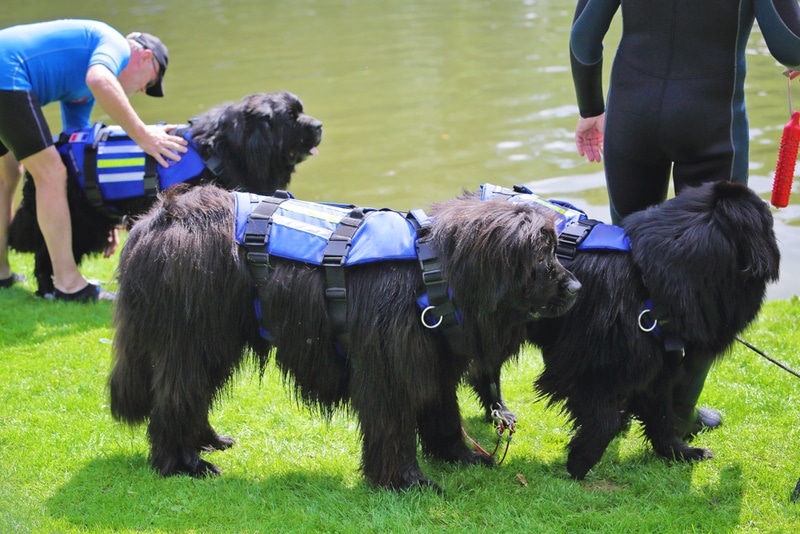
Create Favorable Situations
Your dog will understandably be scared of the water at first. But you can encourage them to enter by creating a few situations.
- Toys or Balls: If your Newfie has a favorite toy or likes to fetch a ball, you can put these items in the pool. It might encourage your dog to enter the water to retrieve them.
- Invite Friends: Your dog might feel more confident entering the water if they see other dogs doing it. Arrange meet-ups with other dogs who can swim. Let your dog watch or follow them in shallow waters with a life vest on.
Have a Post-Swim Routine
After the swimming lesson, show your dog how to exit the pool or the boat. Doing this a few times will teach your Newfie how to find its way out. Then, rinse your dog with fresh water to remove residual chemicals or salt in its haircoat.
It’s also important to spend quality time with your pet, giving them physical and verbal praise after the lesson. You may throw in a few treats for positive reinforcement. Doing this will help your dog associate swimming with fun and rewards.
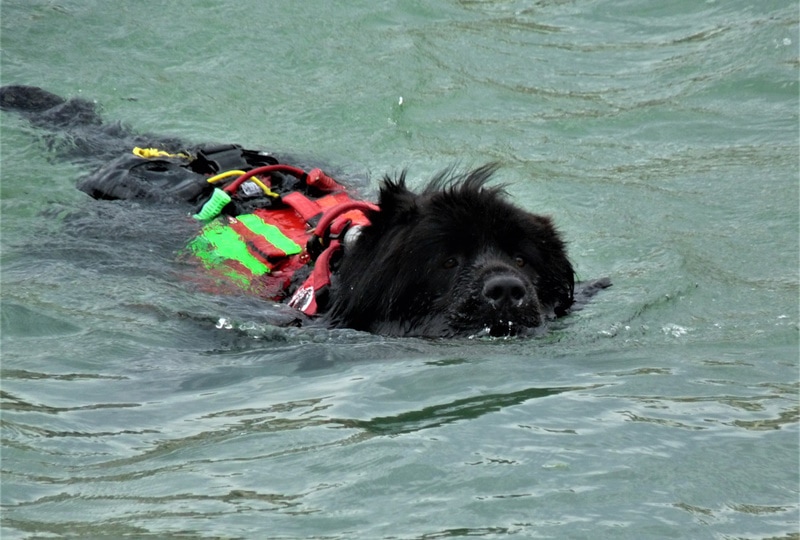
Conclusion
Newfoundland dogs have the physical and behavioral characteristics to become excellent swimmers. The breed’s webbed feet, double coat, and strong tail keep it buoyant in water.
But early training is necessary to ensure your dog stays safe in the water. The key is to start slowly from the shallow side of the water body and move to deeper areas once your pet becomes confident and starts paddling. Also, invest in a quality floatation device and create situations where your pup can explore the water safely.
- Related read: 16 Newfoundland Dog Mixes (With Pictures)
Featured Image Credit: Olefirenko Vitaly, Shutterstock

